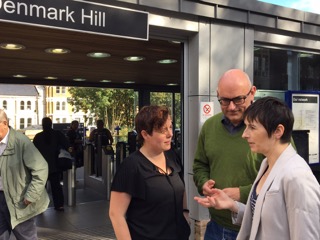Southwark still faces a school places shortfall of 1,800.
Fortunately in the Dulwich area we’ve been working tirelessly since 2009 to stop this impacting locally. Lib Dem councillors have initiated or supported practically three new Primary schools – Harris Primary Academy East Dulwich, Judith Kerr Primary School, Belham Primary School, and one secondary school locally and one in the very north of the borough respectively The Charter School East Dulwich and Borough Academy.
All were originally opposed by Southwark Council but fortunately they’ve become a reality – else the pupil place shortfall would be even worse. Ironically Southwark Council are now claiming ownership of these schools – you know when a campaign has been successful when someone else claims it for themselves. It means we do not have a pupil place problem in the Dulwich area. Phew!


